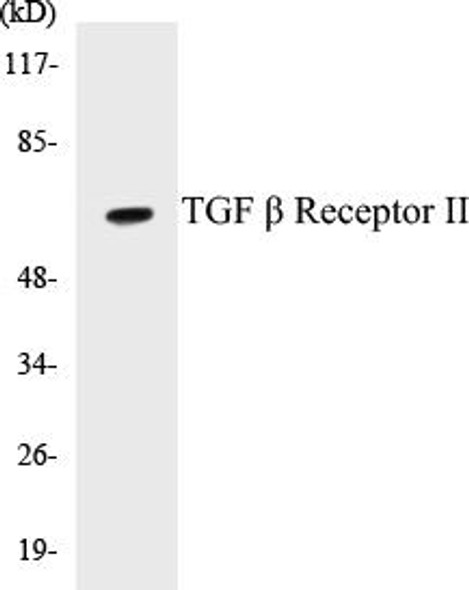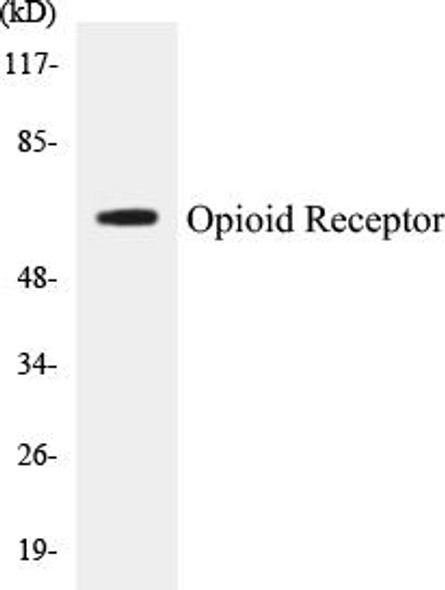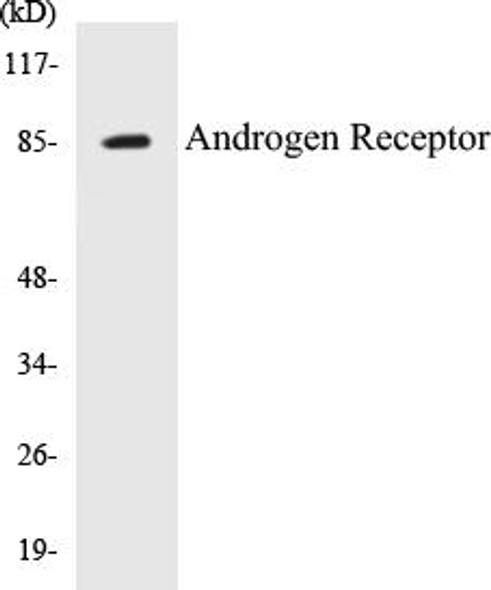Description
TNF Receptor II Colorimetric Cell-Based ELISA
The TNF Receptor II Colorimetric Cell-Based ELISA Kit is specifically designed for the precise detection of TNF receptor II levels in cell lysates, making it an essential tool for researchers studying inflammatory responses and immune regulation. This kit offers high sensitivity and specificity, allowing for accurate and reproducible results in various experimental settings.TNF receptor II, also known as TNFR2, is a key receptor involved in mediating the effects of tumor necrosis factor (TNF), a critical cytokine in the regulation of immune responses and inflammation. Dysregulation of TNF receptor II has been implicated in various diseases, including autoimmune disorders, inflammatory conditions, and cancer.
By accurately measuring TNF receptor II levels, researchers can gain valuable insights into the mechanisms underlying these diseases and develop targeted therapies.Overall, the TNF Receptor II Colorimetric Cell-Based ELISA Kit is a valuable tool for researchers looking to investigate the role of TNF receptor II in various physiological and pathological processes, making it a versatile option for a wide range of research applications.
| Product Name: | TNF Receptor II Colorimetric Cell-Based ELISA |
| Product Code: | CBCAB00985 |
| ELISA Type: | Cell-Based |
| Target: | TNF Receptor II |
| Reactivity: | Human, Mouse, Rat |
| Dynamic Range: | > 5000 Cells |
| Detection Method: | Colorimetric 450 nmStorage/Stability:4°C/6 Months |
| Format: | 96-Well Microplate |
The TNF Receptor II Colorimetric Cell-Based ELISA Kit is a convenient, lysate-free, high throughput and sensitive assay kit that can detect TNF Receptor II protein expression profile in cells. The kit can be used for measuring the relative amounts of TNF Receptor II in cultured cells as well as screening for the effects that various treatments, inhibitors (ie siRNA or chemicals), or activators have on TNF Receptor II.
Qualitative determination of TNF Receptor II concentration is achieved by an indirect ELISA format. In essence, TNF Receptor II is captured by TNF Receptor II-specific primary antibodies while the HRP-conjugated secondary antibodies bind the Fc region of the primary antibody. Through this binding, the HRP enzyme conjugated to the secondary antibody can catalyze a colorimetric reaction upon substrate addition. Due to the qualitative nature of the Cell-Based ELISA, multiple normalization methods are needed:
| 1. | A monoclonal antibody specific for human GAPDH is included to serve as an internal positive control in normalizing the target absorbance values. |
| 2. | Following the colorimetric measurement of HRP activity via substrate addition, the Crystal Violet whole-cell staining method may be used to determine cell density. After staining, the results can be analysed by normalizing the absorbance values to cell amounts, by which the plating difference can be adjusted. |
| Database Information: | Gene ID: 7133, UniProt ID: P20333, OMIM: 191191, Unigene: Hs.256278 |
| Gene Symbol: | TNFRSF1B |
| Sub Type: | None |
| UniProt Protein Function: | TNF-R2: Receptor with high affinity for TNFSF2/TNF-alpha and approximately 5-fold lower affinity for homotrimeric TNFSF1/lymphotoxin-alpha. The TRAF1/TRAF2 complex recruits the apoptotic suppressors BIRC2 and BIRC3 to TNFRSF1B/TNFR2. This receptor mediates most of the metabolic effects of TNF-alpha. Isoform 2 blocks TNF-alpha-induced apoptosis, which suggests that it regulates TNF-alpha function by antagonizing its biological activity. Binds to TRAF2. Interacts with BMX. 2 isoforms of the human protein are produced by alternative splicing. |
| UniProt Protein Details: | Protein type:Membrane protein, integral; Receptor, cytokine Chromosomal Location of Human Ortholog: 1p36.22 Cellular Component: cell soma; perinuclear region of cytoplasm; integral to membrane; plasma membrane; extracellular region; nucleus; lipid raft Molecular Function:protein binding; tumor necrosis factor receptor activity; ubiquitin protein ligase binding Biological Process: tumor necrosis factor-mediated signaling pathway; DNA damage response, signal transduction resulting in induction of apoptosis; negative regulation of inflammatory response; immune response; RNA destabilization; inflammatory response; positive regulation of membrane protein ectodomain proteolysis; aging |
| NCBI Summary: | The protein encoded by this gene is a member of the TNF-receptor superfamily. This protein and TNF-receptor 1 form a heterocomplex that mediates the recruitment of two anti-apoptotic proteins, c-IAP1 and c-IAP2, which possess E3 ubiquitin ligase activity. The function of IAPs in TNF-receptor signalling is unknown, however, c-IAP1 is thought to potentiate TNF-induced apoptosis by the ubiquitination and degradation of TNF-receptor-associated factor 2, which mediates anti-apoptotic signals. Knockout studies in mice also suggest a role of this protein in protecting neurons from apoptosis by stimulating antioxidative pathways. [provided by RefSeq, Jul 2008] |
| UniProt Code: | P20333 |
| NCBI GenInfo Identifier: | 21264534 |
| NCBI Gene ID: | 7133 |
| NCBI Accession: | P20333.3 |
| UniProt Secondary Accession: | P20333,Q16042, Q6YI29, Q9UIH1, B1AJZ3, |
| UniProt Related Accession: | P20333 |
| Molecular Weight: | 28,461 Da |
| NCBI Full Name: | Tumor necrosis factor receptor superfamily member 1B |
| NCBI Synonym Full Names: | tumor necrosis factor receptor superfamily, member 1B |
| NCBI Official Symbol: | TNFRSF1B |
| NCBI Official Synonym Symbols: | p75; TBPII; TNFBR; TNFR2; CD120b; TNFR1B; TNFR80; TNF-R75; p75TNFR; TNF-R-II |
| NCBI Protein Information: | tumor necrosis factor receptor superfamily member 1B; TNF-R2; TNF-RII; p75 TNF receptor; p80 TNF-alpha receptor; soluble TNFR1B variant 1; tumor necrosis factor receptor 2; tumor necrosis factor beta receptor; tumor necrosis factor receptor type II; tumor necrosis factor binding protein 2 |
| UniProt Protein Name: | Tumor necrosis factor receptor superfamily member 1B |
| UniProt Synonym Protein Names: | Tumor necrosis factor receptor 2; TNF-R2; Tumor necrosis factor receptor type II; TNF-RII; TNFR-II; p75; p80 TNF-alpha receptor; CD_antigen: CD120b; INN: EtanerceptCleaved into the following 2 chains:Tumor necrosis factor receptor superfamily member 1b, membrane form; Tumor necrosis factor-binding protein 2Alternative name(s):TBP-2; TBPII |
| UniProt Gene Name: | TNFRSF1B |
| UniProt Entry Name: | TNR1B_HUMAN |
| Component | Quantity |
| 96-Well Cell Culture Clear-Bottom Microplate | 2 plates |
| 10X TBS | 24 mL |
| Quenching Buffer | 24 mL |
| Blocking Buffer | 50 mL |
| 15X Wash Buffer | 50 mL |
| Primary Antibody Diluent | 12 mL |
| 100x Anti-Phospho Target Antibody | 60 µL |
| 100x Anti-Target Antibody | 60 µL |
| Anti-GAPDH Antibody | 60 µL |
| HRP-Conjugated Anti-Rabbit IgG Antibody | 12 mL |
| HRP-Conjugated Anti-Mouse IgG Antibody | 12 mL |
| SDS Solution | 12 mL |
| Stop Solution | 24 mL |
| Ready-to-Use Substrate | 12 mL |
| Crystal Violet Solution | 12 mL |
| Adhesive Plate Seals | 2 seals |
The following materials and/or equipment are NOT provided in this kit but are necessary to successfully conduct the experiment:
- Microplate reader able to measure absorbance at 450 nm and/or 595 nm for Crystal Violet Cell Staining (Optional)
- Micropipettes with capability of measuring volumes ranging from 1 µL to 1 ml
- 37% formaldehyde (Sigma Cat# F-8775) or formaldehyde from other sources
- Squirt bottle, manifold dispenser, multichannel pipette reservoir or automated microplate washer
- Graph paper or computer software capable of generating or displaying logarithmic functions
- Absorbent papers or vacuum aspirator
- Test tubes or microfuge tubes capable of storing ≥1 ml
- Poly-L-Lysine (Sigma Cat# P4832 for suspension cells)
- Orbital shaker (optional)
- Deionized or sterile water
*Note: Protocols are specific to each batch/lot. For the correct instructions please follow the protocol included in your kit.
| Step | Procedure |
| 1. | Seed 200 µL of 20,000 adherent cells in culture medium in each well of a 96-well plate. The plates included in the kit are sterile and treated for cell culture. For suspension cells and loosely attached cells, coat the plates with 100 µL of 10 µg/ml Poly-L-Lysine (not included) to each well of a 96-well plate for 30 minutes at 37°C prior to adding cells. |
| 2. | Incubate the cells for overnight at 37°C, 5% CO2. |
| 3. | Treat the cells as desired. |
| 4. | Remove the cell culture medium and rinse with 200 µL of 1x TBS, twice. |
| 5. | Fix the cells by incubating with 100 µL of Fixing Solution for 20 minutes at room temperature. The 4% formaldehyde is used for adherent cells and 8% formaldehyde is used for suspension cells and loosely attached cells. |
| 6. | Remove the Fixing Solution and wash the plate 3 times with 200 µL 1x Wash Buffer for five minutes each time with gentle shaking on the orbital shaker. The plate can be stored at 4°C for a week. |
| 7. | Add 100 µL of Quenching Buffer and incubate for 20 minutes at room temperature. |
| 8. | Wash the plate 3 times with 1x Wash Buffer for 5 minutes each time. |
| 9. | Add 200 µL of Blocking Buffer and incubate for 1 hour at room temperature. |
| 10. | Wash 3 times with 200 µL of 1x Wash Buffer for 5 minutes each time. |
| 11. | Add 50 µL of 1x primary antibodies (Anti-TNF Receptor II Antibody and/or Anti-GAPDH Antibody) to the corresponding wells, cover with Parafilm and incubate for 16 hours (overnight) at 4°C. If the target expression is known to be high, incubate for 2 hours at room temperature. |
| 12. | Wash 3 times with 200 µL of 1x Wash Buffer for 5 minutes each time. |
| 13. | Add 50 µL of 1x secondary antibodies (HRP-Conjugated AntiRabbit IgG Antibody or HRP-Conjugated Anti-Mouse IgG Antibody) to corresponding wells and incubate for 1.5 hours at room temperature. |
| 14. | Wash 3 times with 200 µL of 1x Wash Buffer for 5 minutes each time. |
| 15. | Add 50 µL of Ready-to-Use Substrate to each well and incubate for 30 minutes at room temperature in the dark. |
| 16. | Add 50 µL of Stop Solution to each well and read OD at 450 nm immediately using the microplate reader. |
(Additional Crystal Violet staining may be performed if desired – details of this may be found in the kit technical manual.)






